
August 23, 2023
The American Diabetes Association (ADA) is one of the nation's largest nonprofit diabetes charities. The organization is well known for its annual Scientific Sessions, one of the largest scientific gatherings in the world that brings together outstanding researchers and industry leaders to share and discuss their newest findings in diabetes-focused research. They also publish their definitive Standards of Care in Diabetes, a key reference guide used by physicians and insurance companies regarding management and diagnostic criteria for all types of diabetes.
Over the last decade, the ADA has experienced a decline in revenue. Although this poses a clear challenge to the ADA, there is still a wealth of opportunity to fundamentally strengthen the organization. Click here to read more about ADA revenue.
The JDCA conducted a survey in July to find the T1D community’s opinion on the ADA. The 150 respondents were geographically dispersed across the US, between the ages of 18-65, and were T1D donors or fundraisers. We asked for donors’ general attitudes toward the ADA and its programs, their level of engagement with the organization, and their likelihood to donate.
The results of this survey were varying but pointed, and included opportunities for improvement. We share these findings not to damage or harm, but to encourage the ADA to deepen its strengths and address the challenges to grow and expand. We believe that this will ultimately result in a stronger ADA more committed to a T1D cure—and that benefits us all.
Key Findings:
T1D Donors Continue to Feel Positively toward the ADA Brand
The ADA brand remains well-regarded within the T1D community. More than half—75%—of survey respondents indicated a positive or very positive perception of the ADA (see chart 1).

Surprisingly, Many T1D Donors Believe Cure Research is a Top ADA Priority
53% of donors believe the ADA places a high level of priority on finding a cure for type 1 diabetes (see chart 2).
In actual fact, only a minority of ADA resources are used to fund T1D research grants. This will be covered later in the report.
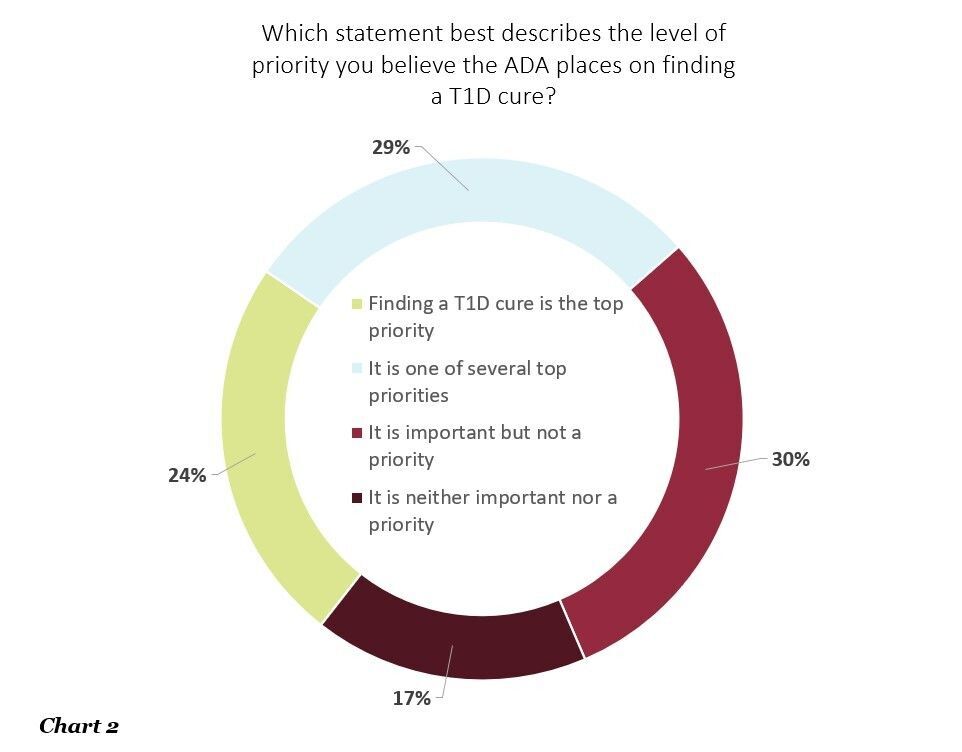
T1D Community Reports Low Engagement with ADA Activities
T1D donors demonstrated markedly low engagement with ADA news and institutional updates. 44% of donors could not name any T1D cure initiatives funded by the ADA, and 52% had no opinion of the ADA’s performance over the past year (see charts 3 and 4).
This suggests the reason the ADA maintains such high regard is due to a lack of information.
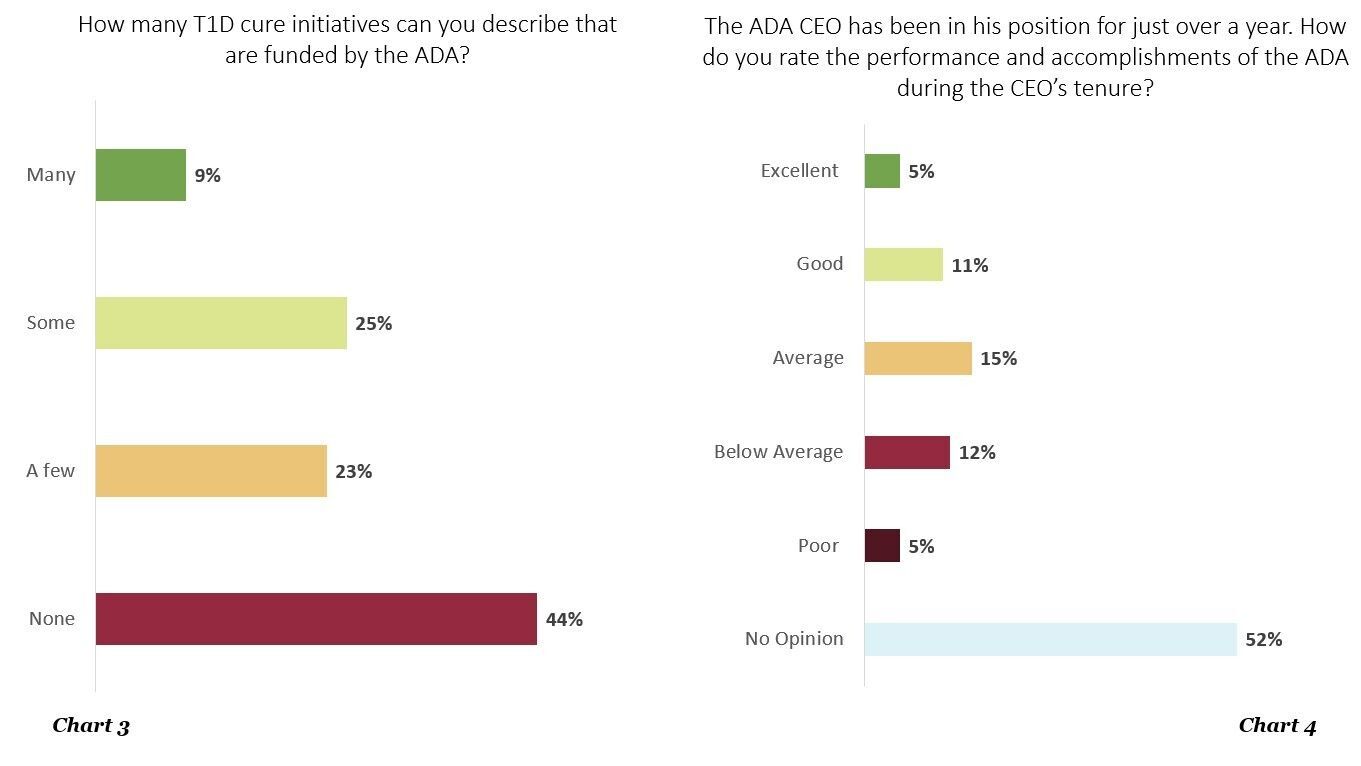
Donors Choose Not to Give to the ADA Despite Positive Sentiments
Despite its positive reputation, 91% of T1D donors do not give to the ADA. These donors choose to give their money to other outlets, with a high preference toward the JDRF (see chart 5). This data is consistent with prior years—92% of donors in 2022 said they did not choose to give to the ADA.
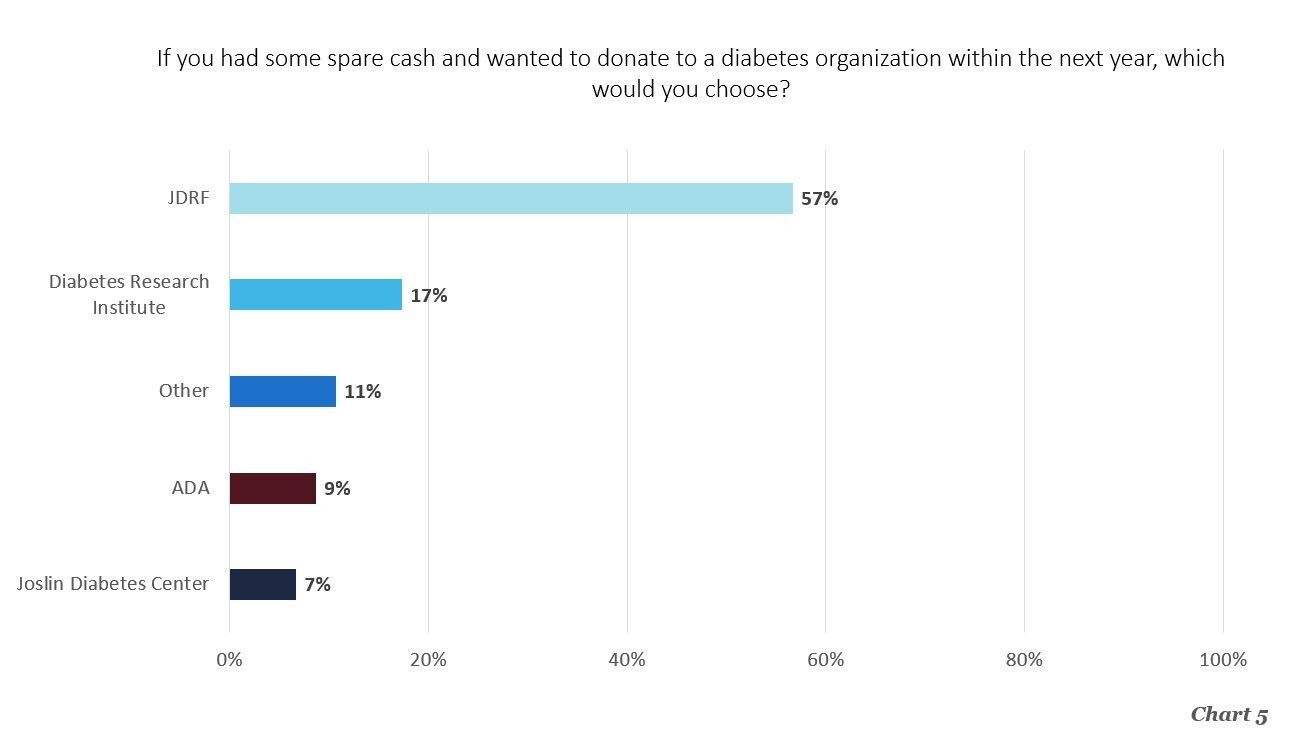
Donors Are Disappointed to Find How Little the ADA Gives to T1D Research Grants
Later in the survey, we shared with T1D donors how much of the ADA’s annual budget was used to fund research grants in 2022—just 18% of its total budget.
It is important to note that after 2018, the ADA stopped publicly sharing the specific details of its research grant program. This is in stark contrast to other organizations we cover—like the JDRF—who pride themselves on remaining transparent. In preparation for this report, we sent multiple requests to the ADA’s chief legal officer for clarification, who ultimately said, "The ADA does not assign specific allocation percentages to types of research across T1D, T2D, gestational, mixed, and other diabetes."
We then asked T1D donors their likelihood to give money to the ADA in the future based on this public information. 71% of donors said they would be even less likely to donate to the ADA (see chart 6). Of the donors who said the likelihood of them donating to the ADA would not change, 87% were not donating to the ADA to begin with.
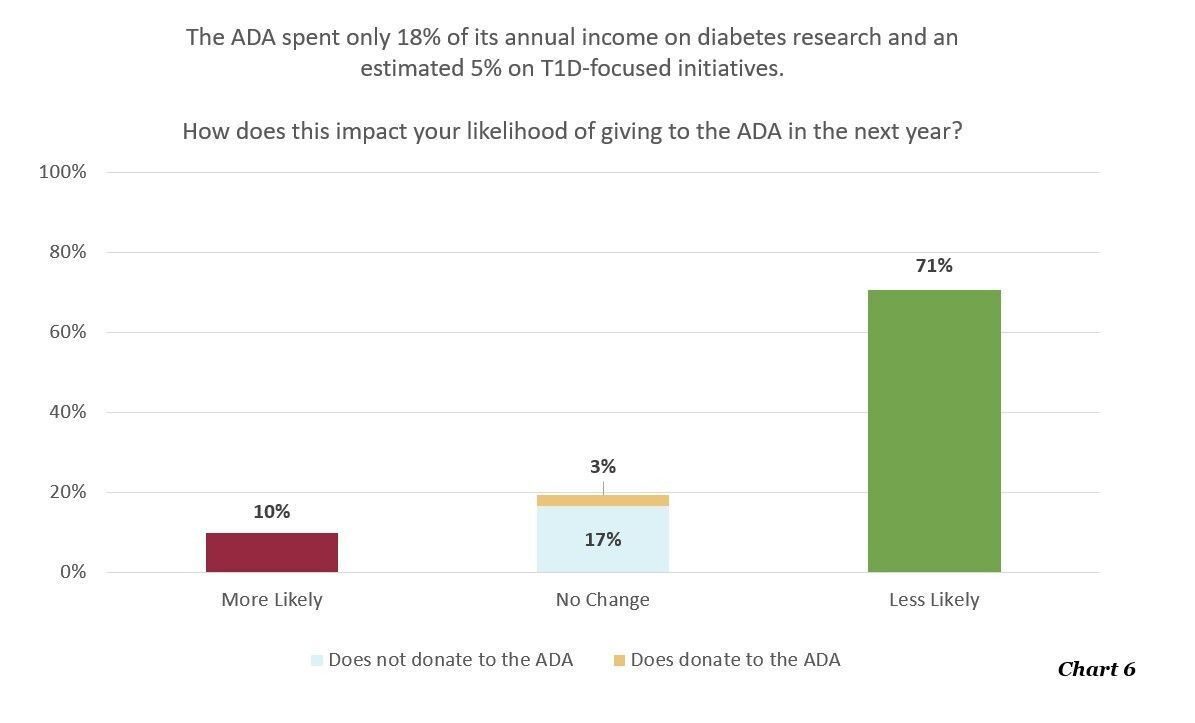
If the ADA Gave More toward a T1D Cure, Donations Would Skyrocket
A whopping 93% of donors believe that the ADA needs to make a deeper commitment to finding a cure for T1D.
We posed this hypothetical scenario:
“Imagine now that the ADA was fully committed to finding a Practical/Functional Cure for T1D, and actively increased its resources devoted to cure research. How would this change your likelihood of supporting the ADA in the future?”
Of these answers, 95% of donors reported they were more likely to or would definitely donate if the ADA devoted more to T1D cure research (see chart 7).
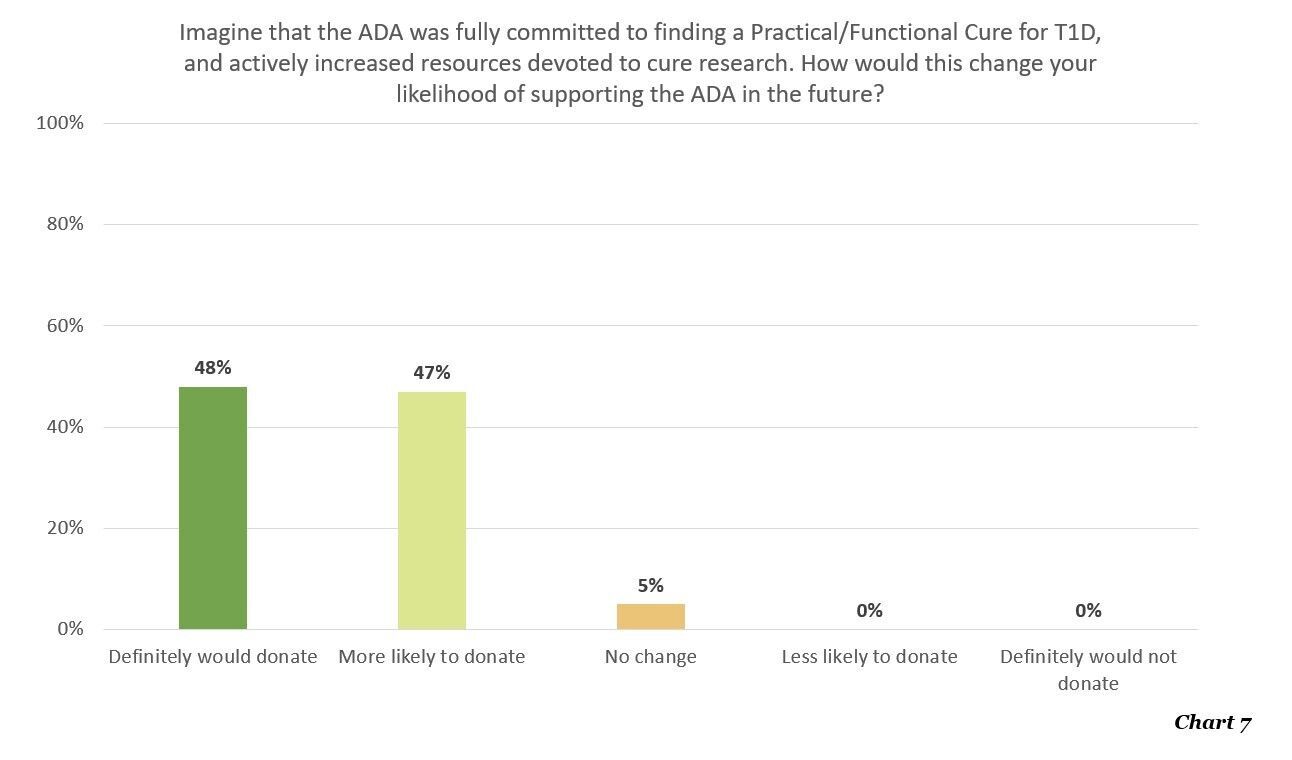
Conclusion
This is a pivotal time for the American Diabetes Association. This sizeable nonprofit is well-known in the diabetic community in such a way that evokes undoubtedly assured faith in the organization. When donors realize how much money is actually going to cure research, this opinion dissipates.
Even though donors choose to give their money elsewhere, the ADA maintains strong relevance within the T1D community. This offers a great opportunity for the ADA. This brand trust is directly correlated with its growing positive reputation and assures donors pay attention.
If the ADA were to increase its resources toward T1D cure research, it would see a stunning increase in donations, meaning a win-win for the ADA and donors alike. We believe this will fundamentally accelerate our speed toward a T1D cure.
